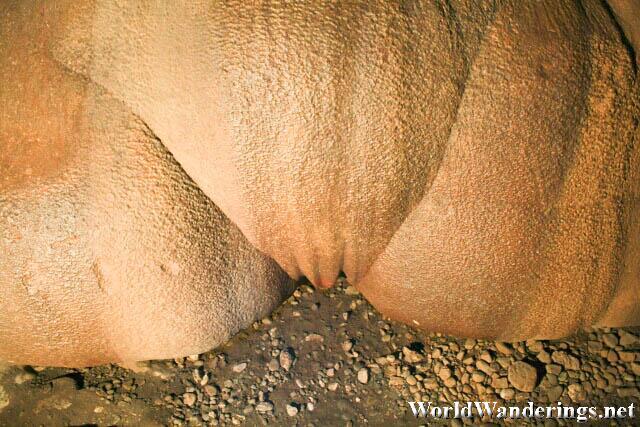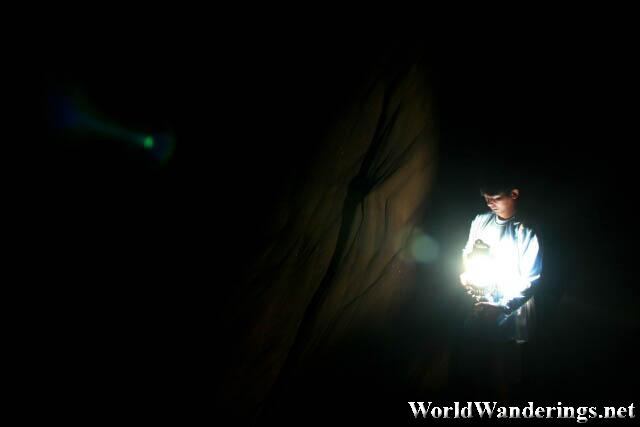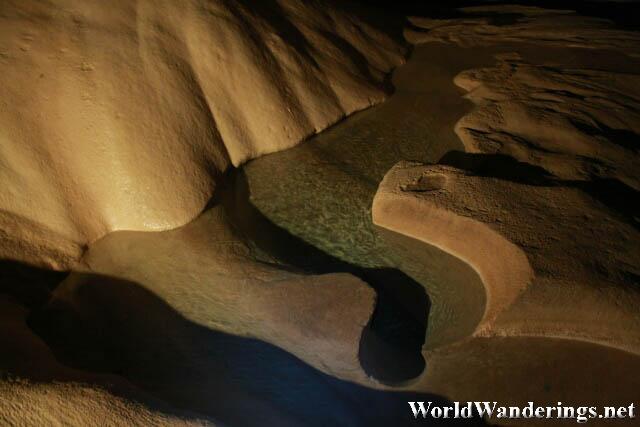The descent into the mouth of the cave took longer than I expected. I was expecting the mouth of the cave to be just right by the road, but we had to take a long flight of stairs before we were truly in the cave. As the last glimmer of sunlight faded from view, Ian, my guide turned on his kerosene lamp and instantly illuminated the entire cavern. He told me that the lamp lasts for a day, so if ever we get lost inside the cave we have a day to figure out how to get out, that’s really good to know.
Ian began another introduction into the basics of caving but this time focusing on being open minded and imaginative. I think I already know what he meant by that. The cavern itself isn’t really very big, in fact it was like a small lecture hall where the seats are all inclined. As I was taking photos another group of spelunkers passed by I guess I was too slow, any way I didn’t need to move fast since I was paying for this trip anyway.
The cave itself is wonderful since it has running water most of which come from condensation from the ceiling, these water pool below to further carve out wonderful images such as a “dinosaur’s footprint”, a snake and other imaginary structures. Ian started pointing out some interesting rock formations, this is where being open minded and imaginative comes in. There were portions of the rock where it was quite slippery so I need to be careful with my balance, most especially with my camera.
On the wall, you can see evidence that this place was previously underwater, shells and mollusks are embedded in the cave wall for all to see. It was an interesting revelation since Sagada is already so high up. It must be wonderful to have a scientist examine the prehistoric pieces of life. I have only been to a couple caves in my life and I must say this is quite an impressive place.
[xmlgm {http://www.worldwanderings.net/kml/Sagada.kmz} zoom=14]



